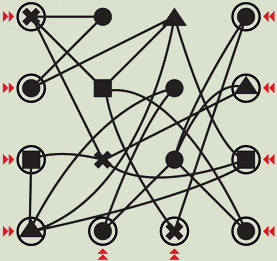Which way to the soundWorkshop of music creation by motion and gesture
Izabela Kościesza - choreographer, dancer, animator
Jarek Kordaczuk - composer, conductor
Commission: Children's Art Center in Poznan

Which way to the sound
Which way to the sound
Music in the sensor field
Composer: Jarek Kordaczuk

Which way to the sound?
workshop of music creation by motion and gesture
Izabela Kościesza - choreographer, dancer, animator
Jarek Kordaczuk - composer, conductor
We learn to make music through movement and gesture. In principle, all musicians do so. But we will not sing nor play instruments. We will look for sounds in a different way. We will search for them moving between objects placed on the floor. In each of these objects are hidden sounds. We will find a way to free them. We will then be able to walk among them, triggering new sound events. From here it is not far to create a music piece. We know how to excite sounds, so we need a score. A traditional score is a book of notes on every page. The pages of our score will be maps. What maps? Setting the route between the objects on the floor, telling us where and how we're should go to get to the right sound. Sometimes maps tell us to go cautiously, slowly. Sometimes they make speed up and even run as fast as our legs can carry us... Yes, yes, in music time does not wait, too! Once we learn to read the maps, we will be able to create new ones. We will also be ready for the first gesture of the conductor. And when that happens, we will make the most authentic, encoded in our map-score piece of music. And without instruments, we will become the most authentic orchestra. Such a little rushed off their feet...

|

|
|
|
|













































































































































































